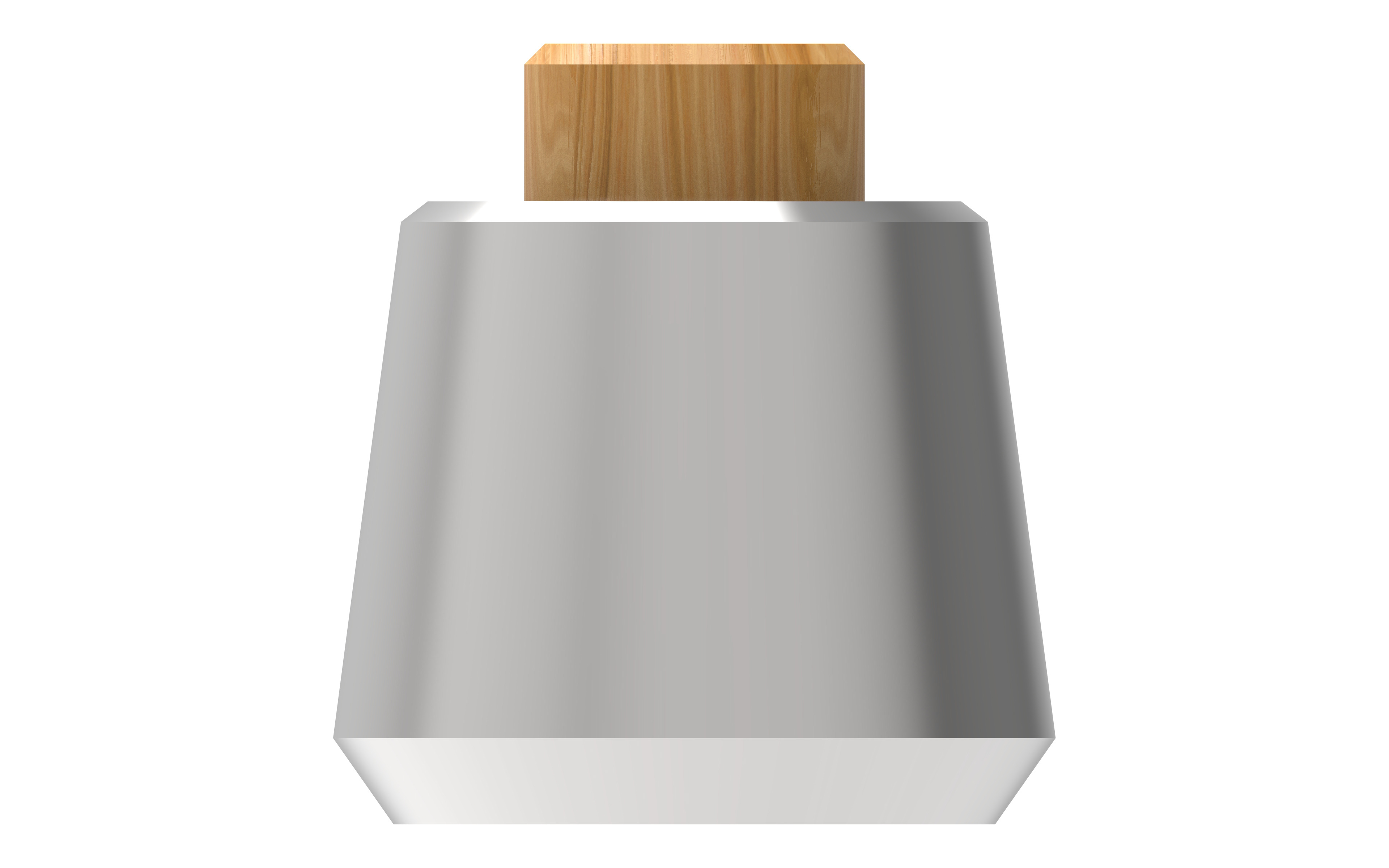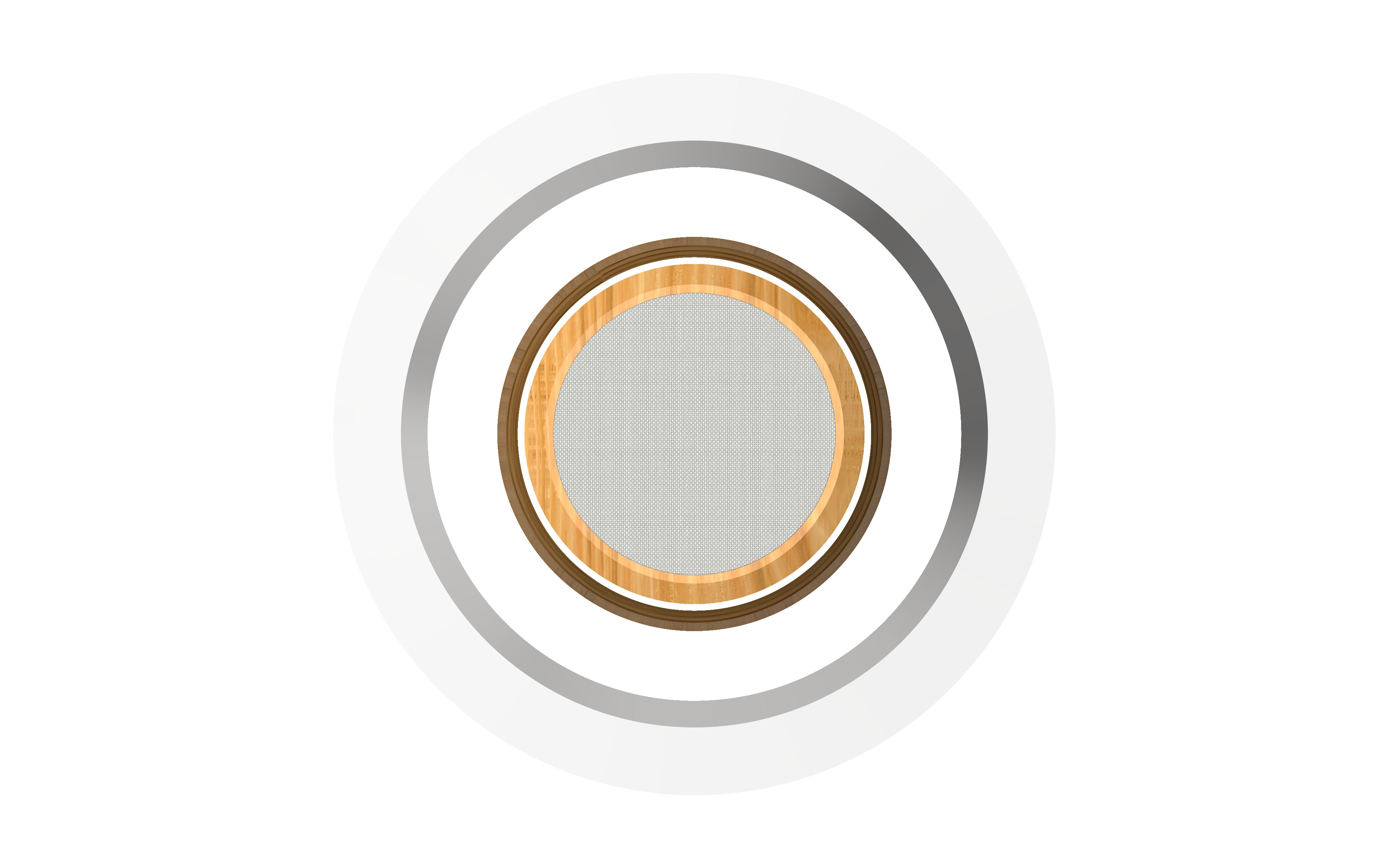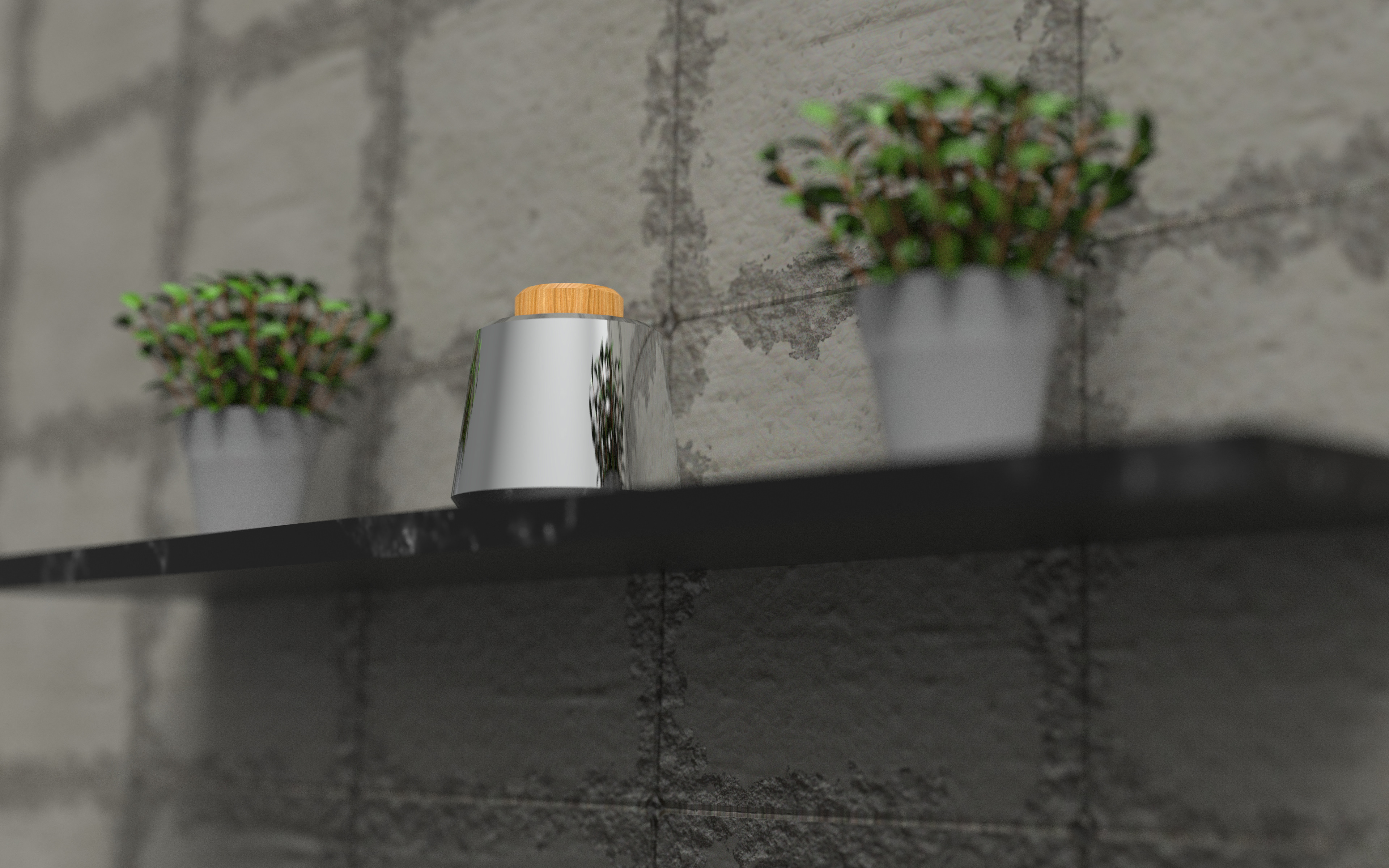S P L I T S P E A K E R
T H E B R I E F
The brief for this project was to select a specific user group of my choice and design a speaker to suit their needs. I chose to design a speaker for the blind. As they do not have the luxury of visual entertainment, I wanted to give them the best audio experience possible.
T H E R E S E A R C H
Through primary and secondary research, I determined three key features it had to have. It had to give independance to the user, it had to be intuative to use, and it couldn't look like it was designed for the visually impaired - no eyesores like huge buttons or loads of clashing bright colours.
T H E I D E A
My final design had two parts: a small handheld speaker that gives the user the freedom to carry the speaker wherever they please, and a sylish base that would wirelessly charge the handheld speaker.
T H E H A N D H E L D S P E A K E R
The handheld speaker is a chamfered wooden cylinder roughly the size of a Coke can. It has a dove grey fabric on top that acts as the physical controls for the user. It contains a battery, bluetooth module, computer chip, speaker, pressure sensor, and fabric cover.


T H E B A S E
The base is a modern, minimal design made out of polished steel. The weight of the object means it wont be accidentally knocked over when users touch it. The material choices allow blind users to feel a clear difference between the cold metal and warmer wood when using touch to locate the speaker.
The handheld speaker fits inside the base perfectly. When pressed down, the handheld speaker will click into place inside the base. Press down again and a spring mechanism will push the handheld speaker up, showing the top half of the speaker, so that a user can easily grab the speaker to carry it elsewhere.




T H E C O N T R O L
The user has the option of two different methods to control the speaker, touch or voice control. The voice control can respond to a range of questions and commands relating to the content and the device itself. To control their entertainment a user can use phrases such as "next song" or "set the volume to 80%". The device specific questions include "how much battery is left" and "where are you", where the device will play an audible tone until the user finds the device and taps the top. The touch controls use extremely intuative gestures, including a single, double, and triple tap system found on many devices already. The volume controls are just as intuative, the user simply draws clockwise or anti-clockwise until they get their desired volume.
T H E F I N A L D E S I G N
The minimal design of the base means it looks beautiful both on a desk in a work environment as well as displayed on the mantlepiece at home like a piece of art.






T H E P R O T O T Y P E S
I went through numerous prototypes before getting to the final form of the speaker and base. These ranged from low fidelity cardboard prototypes to high fidelity 3D printed prototypes.
T H E F I N A L P R O T O T Y P E
The final protoypes show what the product would look like and operate like. The bluetooth module worked extremely well, and kept great sound quality even when the speaker was a large distance away from the connected device. One addition I would add is an NFC chip to make the pairing prosses much easier, especially for visually impaired users. I used 3D printed wood material to construct the body of the speaker, with the two parts screwing together perfectly.


T H E B A S E
The base was made out of high density foam painted to look like polished steel. In the future I intend to cast and finish the base out of metal to what the weight is like. While it functioned well, improvements are certainly needed as the spring mechanism worsened after hundreds of presses throughout the day.

